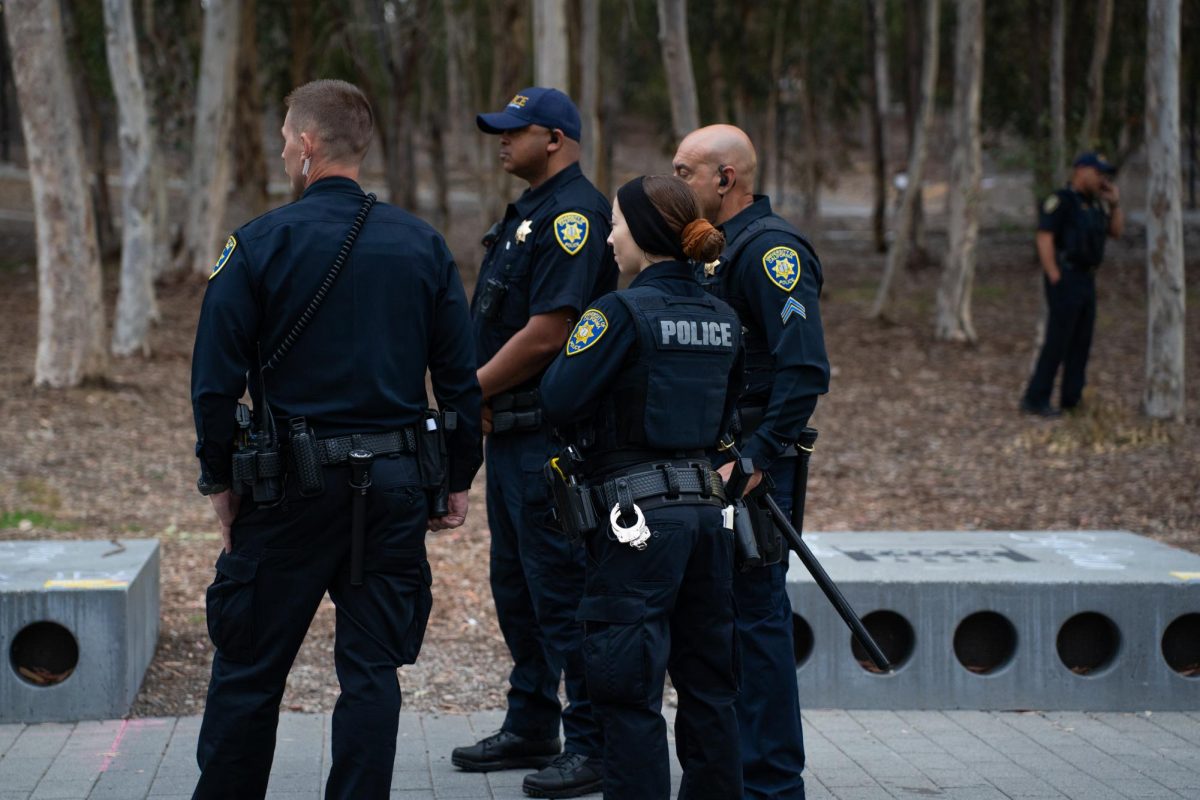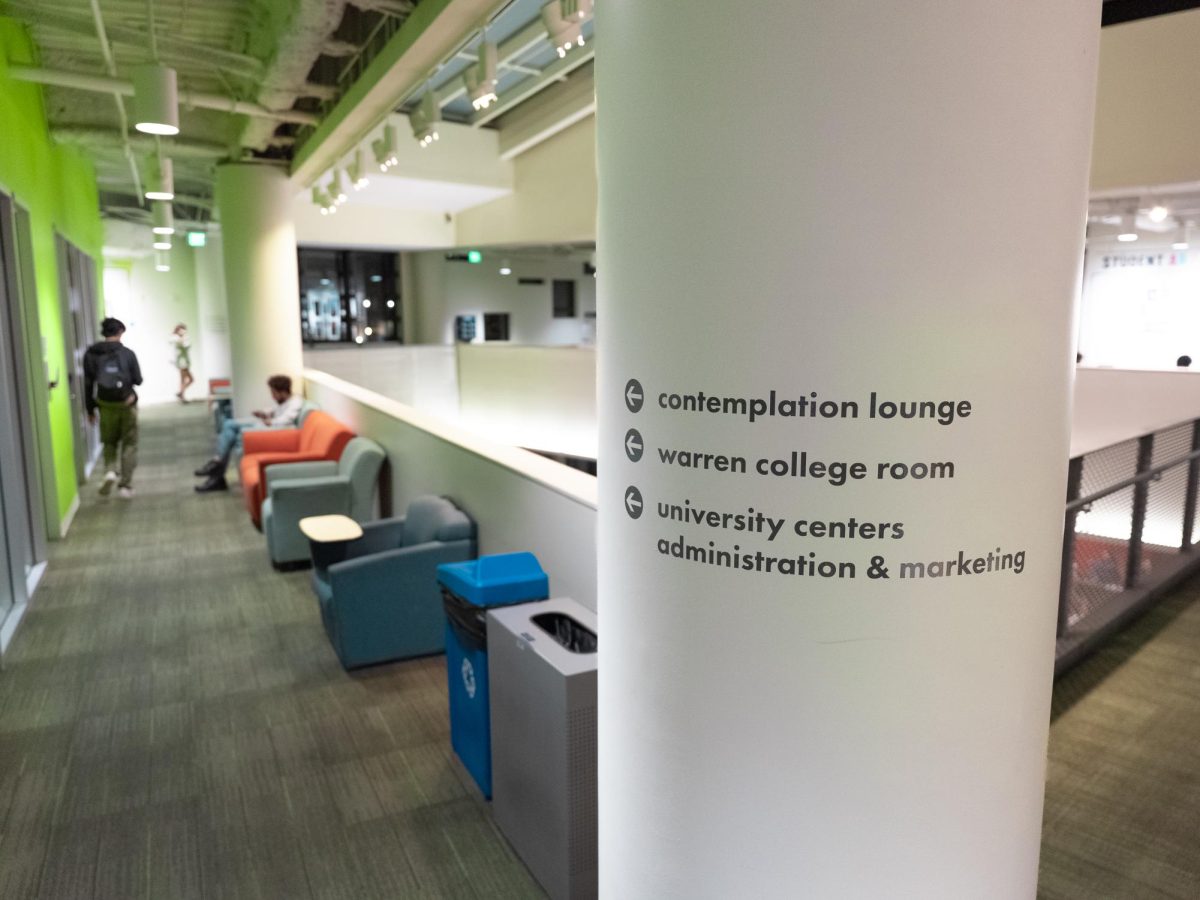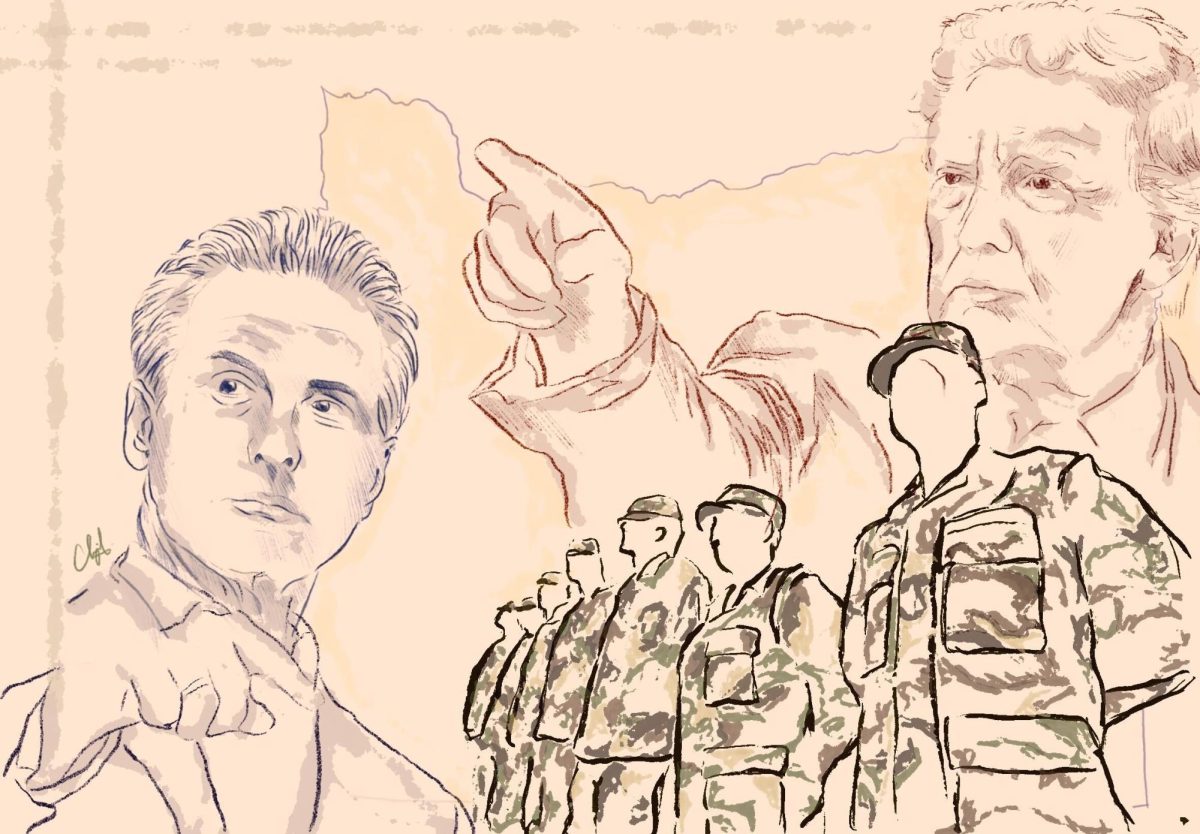Associate professor at Jacobs School of Engineering accused of predatory behavior toward minor
LA JOLLA, Calif. — UC San Diego associate professor Nisarg Shah is under investigation by the San Diego Police Department’s Internet Crimes Against Children Task Force for alleged predatory behavior toward a minor. No charges have been pressed against Shah.
Shah’s actions came to light when he was confronted by Tim Johnson, a member of California-based advocacy group People vs. Predators, during a civilian-led sting operation at a supermarket on Aug. 3. Johnson recorded the encounter and posted it on the group’s Facebook, which gained traction online.
Shah was allegedly at the supermarket in preparation to meet a supposed 14-year-old who he had messaged in a sexual manner on the dating app Grindr. Johnson had been posing as the minor on the app.
“The worst that I have ever felt,” Shah said to Johnson in the confrontation. “Because what I did was, you know, frankly, abhorrent. I [f—–] up. I need to maybe get help or something.”
“I just have a hard time understanding why someone with so much to lose does the things that you did today,” Johnson said.
Shortly after Johnson’s confrontation with Shah, two police cars from the San Diego Police Department arrived on the scene. It is unknown who called for them.
A police officer stated that because civilians had conducted the sting operation, rather than law enforcement, they were unable to arrest him. Shah and Johnson’s phones were seized by the police as evidence for a subsequent ICAC investigation.
Shah’s status at UCSD is unknown. The University has stated that it will collaborate with law enforcement authorities in the investigation.
Shah has a Bachelor of Science in chemical and biomolecular engineering from Johns Hopkins University and a Ph.D. in chemical engineering from Massachusetts Institute of Technology. He was a postdoctoral fellow at Harvard University. His research at UCSD focuses on biomaterials and nanoscale self-assembly, immune engineering, and regenerative medicine.
As of the publishing of this article, Shah’s profile on the Jacobs School of Engineering website is still live. This is a developing story. The UCSD Guardian will continue to provide updated coverage as more information comes to light.
California budget deal includes cuts to healthcare programs
SACRAMENTO, Calif. — On June 24, California Gov. Gavin Newsom and the California Legislature reached a state budget deal for 2025-26. The deal authorizes $321 billion in state spending. Newsom is aiming to reduce California’s $12 billion budget deficit, which he claims is a result of President Donald Trump’s recent economic policies.
Although some cuts to health care programs outlined in Newsom’s May budget proposal were delayed, other cuts to services for undocumented immigrants will proceed.
Starting in January 2026, adults without legal status can no longer enroll for Medi-Cal. This is the result of a substantial increase in enrollment and a general fund shortfall of approximately $11 billion; California expanded enrollment in Medi-Cal to adults without legal status in early 2024.
For undocumented residents already enrolled in Medi-Cal, the budget deal cuts dental coverage starting July 2026 and charges a $30 monthly premium for patients between the ages of 19 and 59, starting July 2027. This rate is a reduction from Newsom’s initially proposed premium of $100.
In addition, Medi-Cal will not cover weight-loss drugs, such as Ozempic, under the agreed budget plan. Due to the services’ contribution to the rising cost of the program, the elimination is projected to save the state $85 million in the 2025-26 fiscal year, growing to $790 million in 2028-29. The coverage will end on Jan. 1, 2026.
The finalized deal outlines $2.8 billion in total reductions in 2025-26, which will increase to $11.9 billion by 2028-29. California also intends to withdraw about $7 billion from the Budget Stabilization Account to balance the budget.
San Diego County swears in new member of Board of Supervisors
SAN DIEGO — On July 22, former Imperial Beach Mayor Paloma Aguirre (D) was sworn in as the new District 1 Supervisor on the San Diego County Board of Supervisors. Aguirre won 59.1% of the vote share in the July 1 special election for the seat, according to the San Diego County Registrar of Voters. Opponent John McCann (R) received 46.1% of the 78,132 votes cast in the election, which had an overall voter turnout of 21.1%.
District 3 Supervisor Terra Lawson-Remer (D) was elected chair of the board on July 22, following Aguirre’s inauguration. The vote was decided 3-1-1, with District 2 Supervisor Joel Anderson (R) abstaining from the vote and District 5 Supervisor Jim Desmond (R) voting against Lawson-Remer’s appointment. District 4 Supervisor Monica Montgomery Steppe (D) was elected as vice chair of the board, and Aguirre was elected as chair pro tempore.
During her campaign, Aguirre promised to resolve the sewage crisis in South County, expand behavioral health services, and distribute more resources toward affordable housing projects. In her inaugural address, Aguirre expressed the significance of her victory for South County residents.
“You stood up and demanded something different, a change in priorities,” she said. “Un nuevo, un foco. A county government where the focus is on working people, not the wealthy and well-connected.”
In a statement after her election to chair, Lawson-Remer shared similar ideas with Aguirre on the future direction of the board.
“San Diegans stood up, demanded a government that works for us, and they won,” the statement read. “As Chair, I promise we will do everything in our power to protect healthcare, housing, clean water and air, public safety — everything we are building together.”
Although the county Board of Supervisors is officially a non-partisan body according to the state constitution, Aguirre’s election marks a shift in the board’s previous political balance. With the appointments of Lawson-Remer and Montgomery Steppe, there is now a Democratic majority among the board’s leadership.
Trump plans to implement new tariffs on pharmaceutical drugs and furniture
WASHINGTON — President Donald Trump announced that new tariffs on imported goods such as pharmaceutical drugs, home furniture, and semi trucks will go into effect on Oct. 1. The new tariffs include 100% rates on any branded pharmaceutical products, 50% rates on kitchen cabinets and bathroom vanities, 30% rates on upholstered furniture such as soft, cushioned sofas, and 25% rates on semi trucks.
Trump said there would be exceptions for pharmaceutical companies that are currently in the process of constructing manufacturing plants in the United States.
The U.S. primarily receives branded pharmaceutical drugs made in Europe. The U.S. and the European Union reached a deal in July that agreed to a maximum 15% tariff on imported brand or patented medicines from Europe. At the time, the Trump administration said Section 232 tariffs would not add to this agreed rate, but the president has not made it clear whether this will change.
Section 232 of the 1962 Trade Expansion Act authorizes the president to issue tariffs on imported goods that may threaten national security. The U.S. Department of Commerce conducts an investigation to determine whether a specific imported good threatens national security and reports to the president, allowing him to decide what measures to implement.
Early this year, the Trump administration issued tariffs on U.S. imports, including cars and material goods, under Section 232.
Trump expanded the range of Section 232 tariffs on Sept. 25 with the new list of imported goods, along with the opening of investigations a day prior that may result in tariffs on robotics, industrial machinery, and medical devices.
Section 232 allows the president to implement tariffs if the U.S. Supreme Court rules against efforts to impose taxes through different legal provisions. In an attempt to stop the alleged flow of fentanyl into the country, Trump used the International Emergency Economic Powers Act to issue tariffs on Canada, Mexico, and China in February. He also imposed a 10% baseline tariff on several imports from almost all countries on April 2.
On Nov. 5, the Supreme Court will hear the case challenging Trump’s use of the emergency powers law to determine whether the administration will be called to remove the tariffs issued on the three countries. Section 232 tariffs and those under other laws would be left unchanged.













